|
Maesllyn Mill, near Newcastle Emlyn, was built in
1881 as a water-powered site with 3 Pelton wheels
and it was one of the last new woollen mills built
in Wales. It was deliberately modelled on
contemporary Yorkshire practice, and equipped with a
full set of machinery for processing wool from
fleece to finished cloth. The water power was
replaced by electricity generated by a diesel engine
in 1952, with the mill being linked to the National
Grid in 1956. Two new looms and a better
(second-hand) spinning mule were purchased at that
time.
|
|
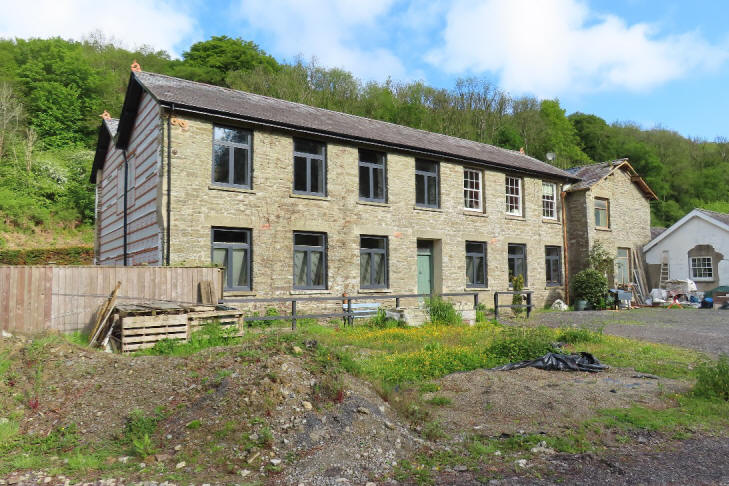
The factory building itself has partly survived ,
although about 40ft of it was demolished. The
remaining 7 bays are being refurbished and converted
as a house, with new windows which echo the
originals.
After closure, the mill became derelict, as seen
below before the leftmost bays were demolished.
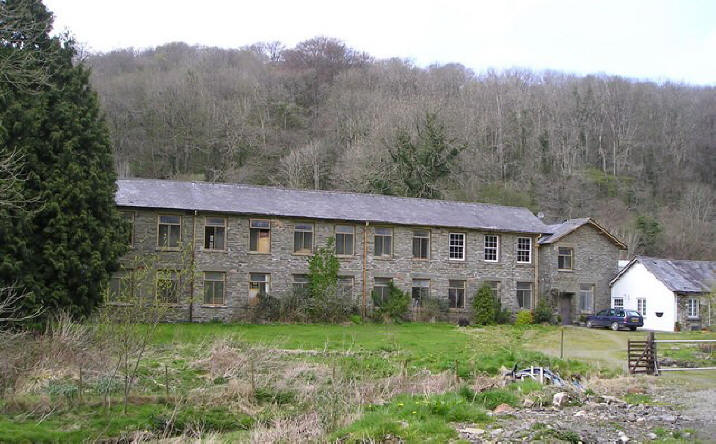
This image was taken from the
Geograph project
collection.
The copyright on this image is owned by Marion
Phillips and is licensed for reuse under the
Creative Commons
Attribution ShareAlike 2.0 license.
When Keith visited Maesllyn Mill in 1989 with SUIAG
(see
newsletter 131, winter 2020)
it was open as a museum and he took quite a few
pictures of the machinery (but not of the
buildings!), as you see on the next pages. This was
fortunate because subsequently the machinery was
removed, some being taken to the National Wool
Museum at Drefach Felindre, where it may be on
display. However it is impossible to say as
nothing there is labelled. |
|
The owner very kindly allowed us to photograph a
copy of the guide book which has survived from the
millís days as a museum; it gives a detailed
account of the processes involved in cloth
manufacture, along with an inventory of the machines
on display. She also showed us a handful of samples
of colourful blanket pieces which were left behind
when the mill was cleared. |
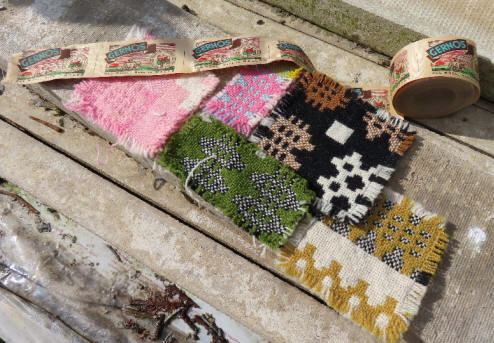
|
|
In the 20th century the output was more likely to
have been flannel for uniforms and workwear. You
can see examples displayed on the wall behind the
machine here in 1989. (I donít recognise the
machine, so I canít tell you what it is.)
By way of thanks to the owner, I have sent her
copies of Keithís 1989 pictures.
|
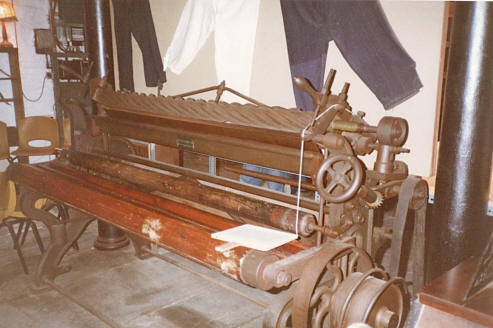 |
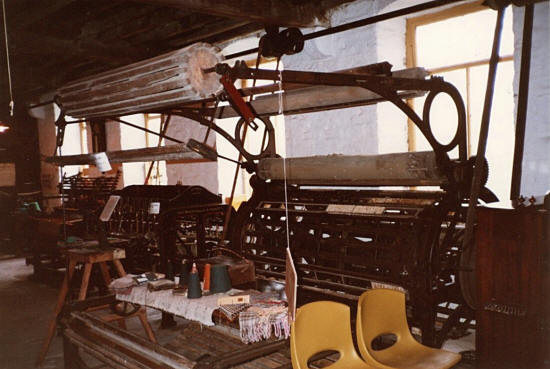
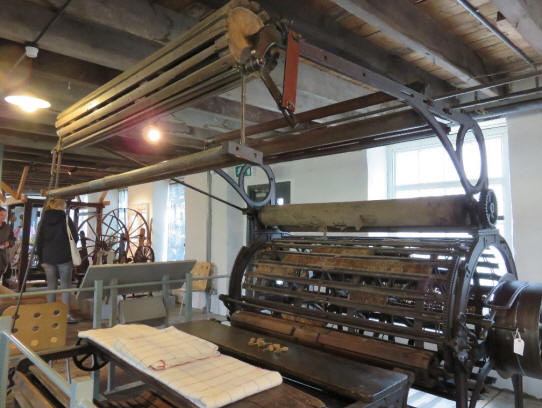
|
This finishing machine (gig mill) was photographed
by Keith at Maesllyn in 1989. While we were looking
through our current photographs taken in the
National Woollen Museum we were very surprised to
find the same machine. Comparing the 2 photos you
can see that even the cloth displayed in front of
them is the same.
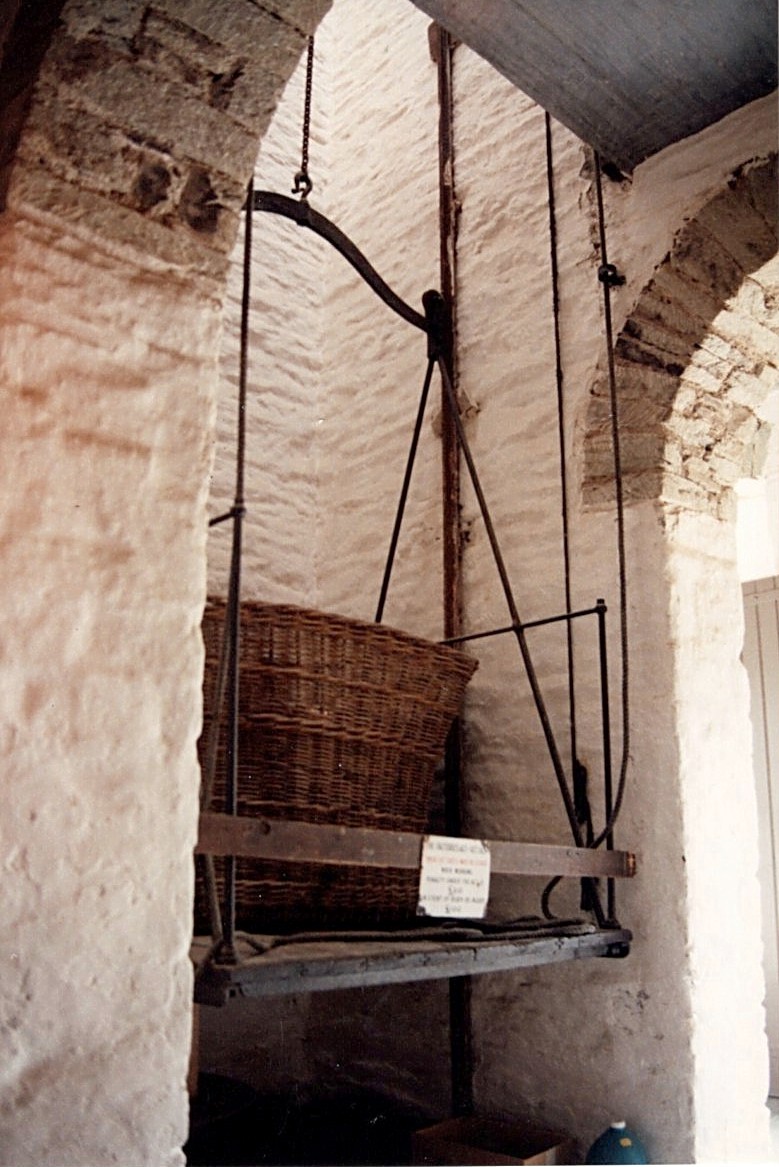
A wool sack hoist (Maesllyn 1989) |
|
All textile museums must have an example of the
self-acting spinning mule; this is the one
displayed at the National Wool Museum.
Did it also come from Maesllyn? |
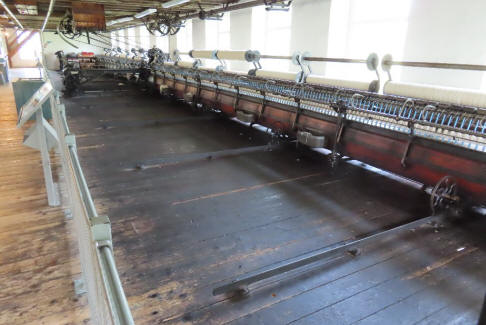 |
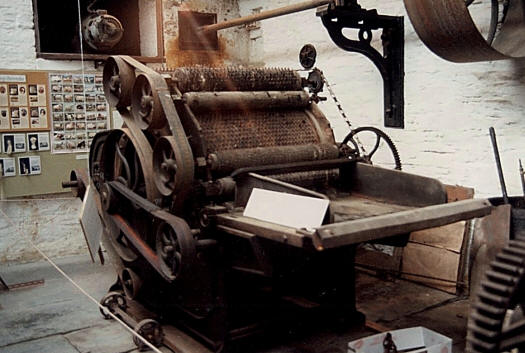
|
I believe that this is the willeying machine
(photographed in 1989) which was listed in the
guidebook that we photographed on our visit. It was
used to tease out the matted wool at the start of
processing and so must be very similar to a carding
machine. |
|
Other Welsh
Woollen Mills visited,
Keith Andrews |
|
HMG visited Cambrian Mills and Tregwynt Woollen Mill
in 2017; see report in newsletter 118, autumn
2017. They do not appear to have changed.
The large Cambrian Mills at Drefach Felindre
are still the National Woollen Museum ; this is a
view of the sheds.
|
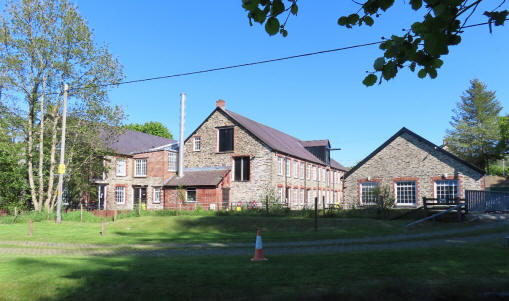 |
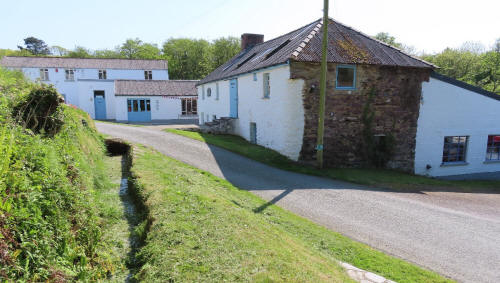 |
Tregwynt Woollen Mill
is still in full operation; this view is along the
original watercourse, although the water wheel is
now only for display and the looms are powered by
electricity. |
|
Rock Mill
(right)
at Capel Dewi is loudly advertised on brown road
signs, but the mill building with its large
waterwheel is no longer accessible to the public and
cannot be visited because its public liability
insurance has lapsed. The shop and storeroom
suggest that it may still be able to produce cloth,
or at least to be selling its old stock. |
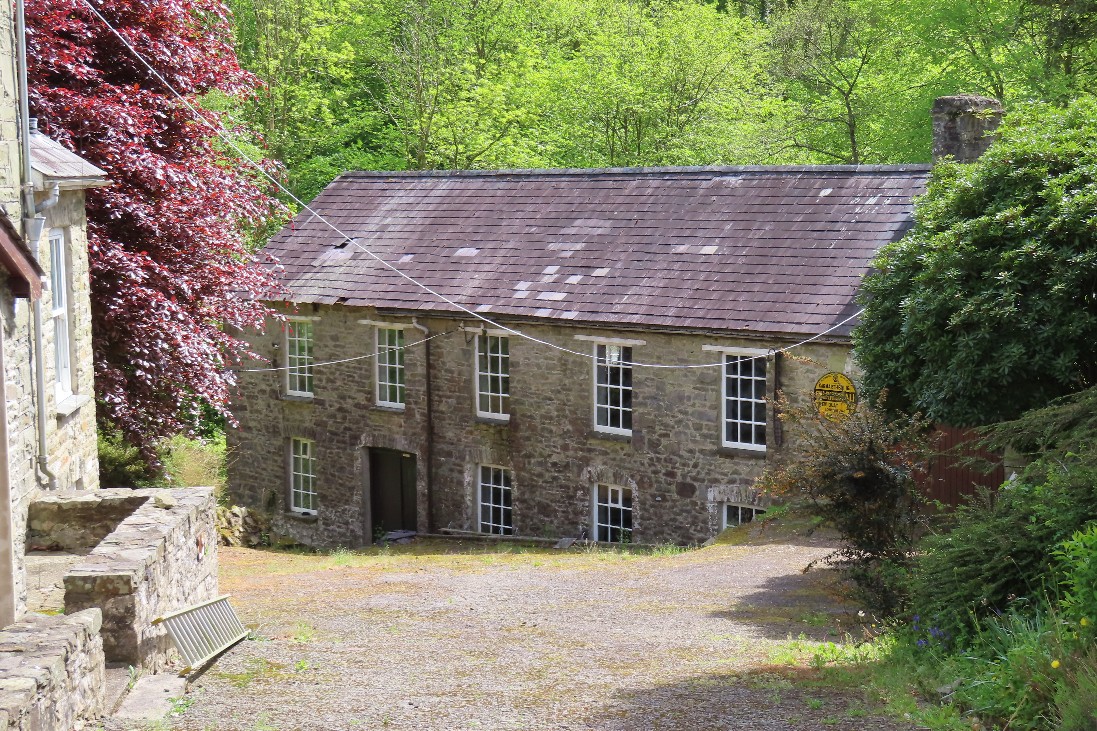 |
|
Alltcafan Mill at Pentre Cwrt on the River Teifi was
said to be one of the finest Welsh woollen mills,
powered by 3 turbines, with machines for carding,
spinning, weaving, and other processes, and produced
tweeds, blankets, and flannel. By 1989 when SUIAG
visited it was closed. (I had forgotten that visit
until I looked back at my Maesllyn photos and field
trip notes and saw it).
It now looks to be in the process of conversion to
residential use. However, the magnificent 4-storey
building with a sloping roof extension alongside the
river seen in the 1989 view (top) has been
demolished, leaving only the smaller 2-storey
building shown here (right). We did not realise
this until we compared the old and new photos.
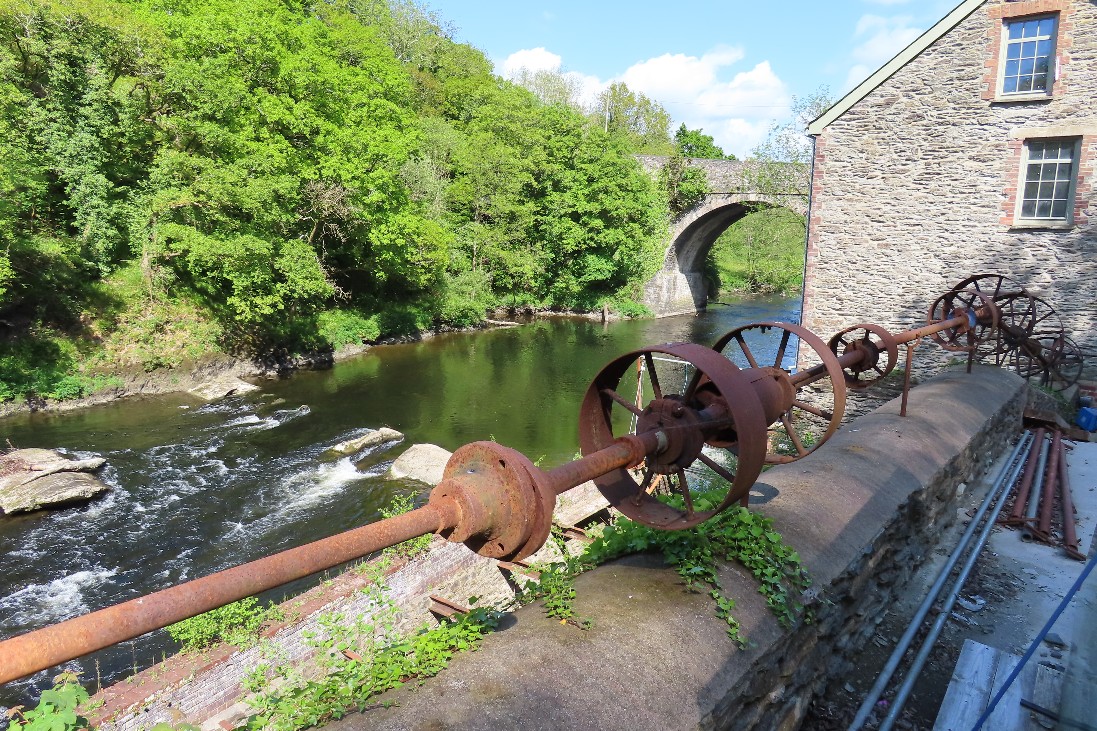
The erstwhile line shafting now decorates a wall. |
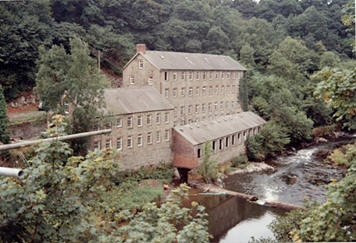
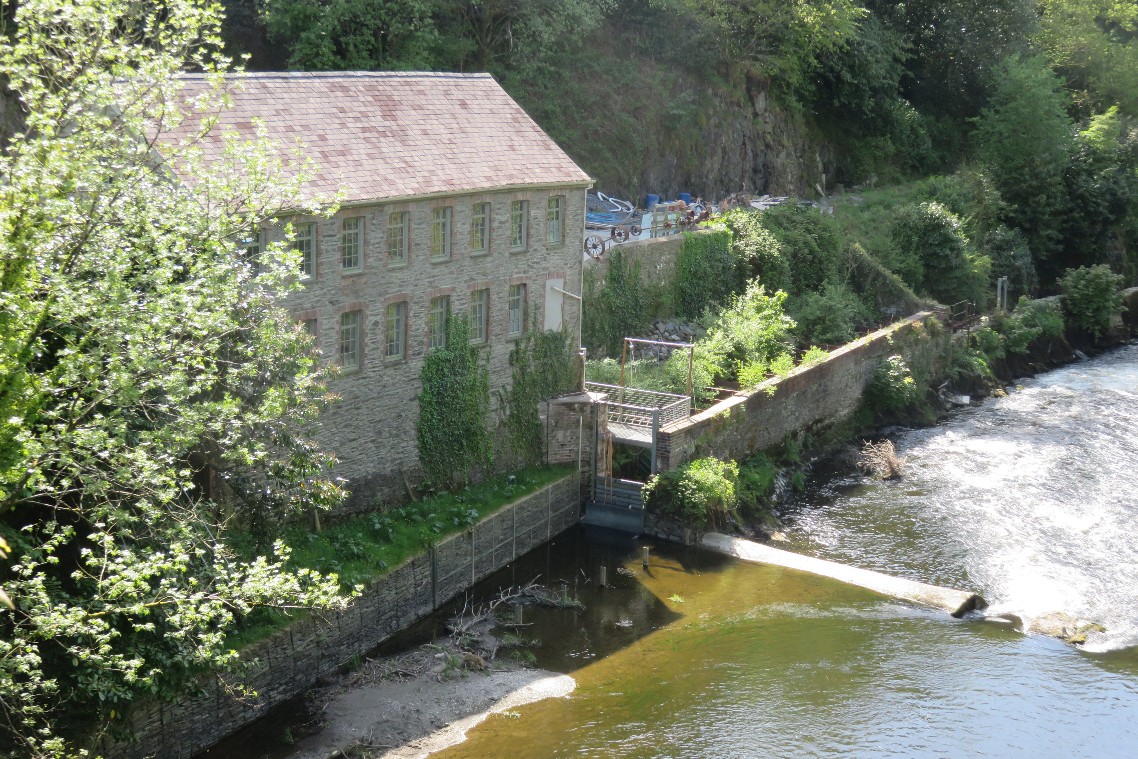
|
| |
|
